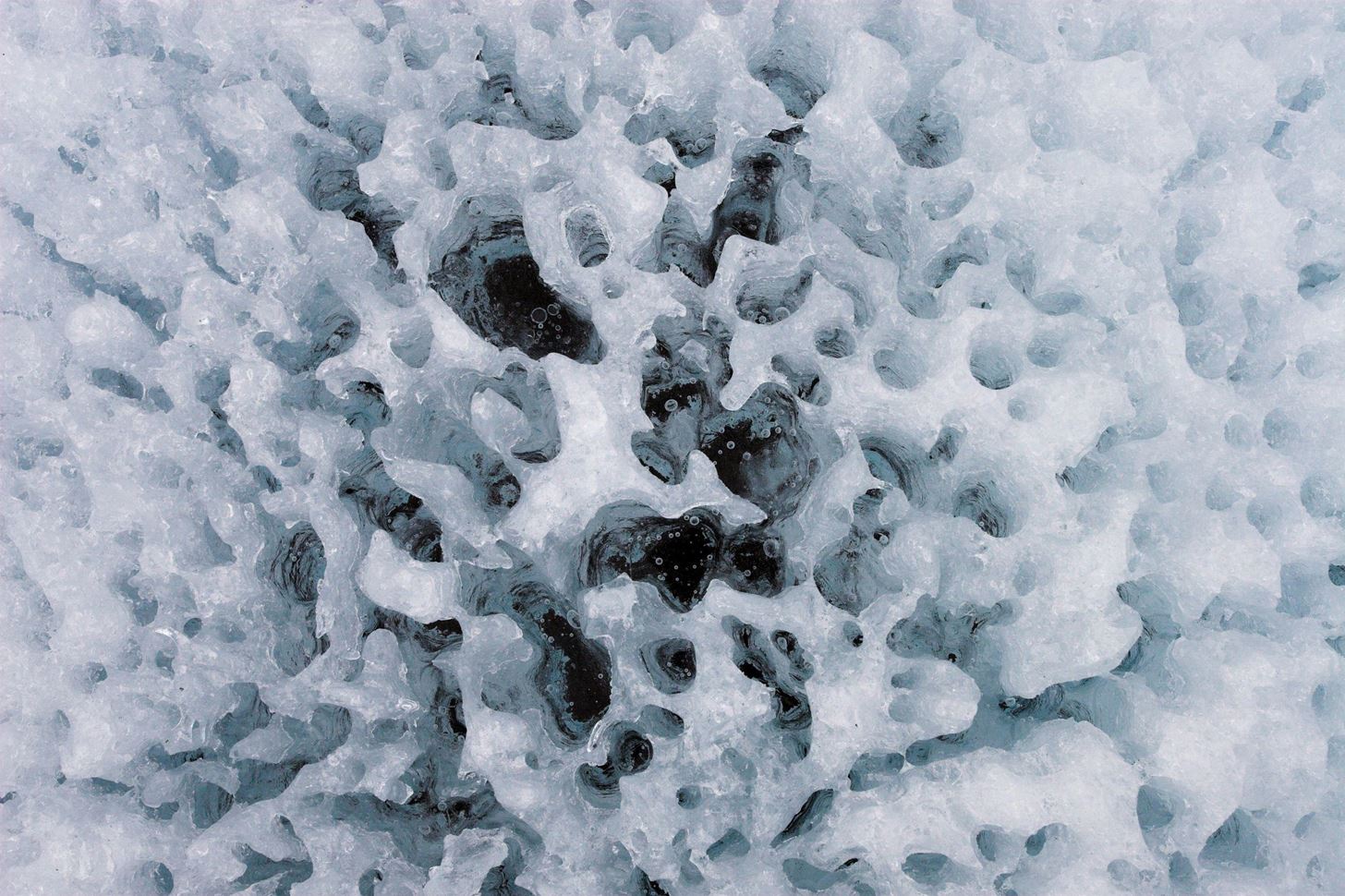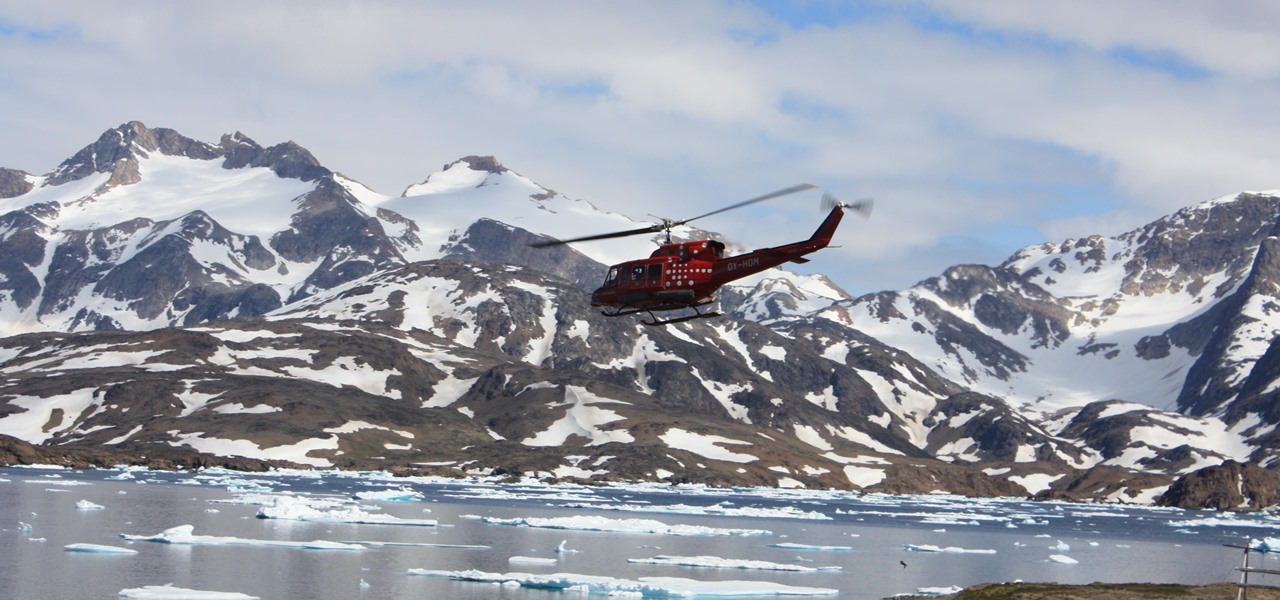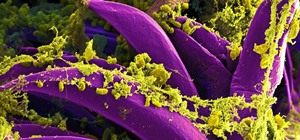Windborne microbes shifting in the snows of the great ice sheet of Greenland may be able to neutralize some of the industrial contaminants oozing out of the melting ice.
Greenland is a long way off, and we tend to dismiss what happens there as not impacting us here — out of sight, out of mind, as they say. But the problem — and the possibility of microbial help — has significance for anyone on the planet.
Situated in the Arctic, the Greenland ice sheet is the biggest span of ice on the planet, outside of Antarctica. With a size approaching the state of Alaska, the sheet is about 660,000 square miles in area, and close to two miles thick at its highest point. According to NASA, the ice sheet covering Greenland is warming up twice as fast as other places on the globe.
While melting glaciers and ice sheets conjure visions of large chunks of ice breaking off and roaring into the ocean, a large problem with the Greenland ice sheet is surface ice melt. Rivers of water flow over and through the sheet and out into the ocean, as shown below in a video taken by a UCLA research term during the massive Greenland ice sheet melt of 2012.
With its enormous size, the melt of the Greenland ice sheet alone could raise ocean levels around the world by a predicted 20–24 feet. The Greenland and Antarctic ice sheets hold about 99% of the freshwater available on the planet. Since the start of the 20th century, the sea level has risen eight inches from ice sheet melt, and two inches in just the last 20 years. The loss of ice pack in this area of the Arctic began in the 1990s and continues to accelerate.
Loss of the ice sheets has big environmental impacts. Water levels of some seaboards will rise more than others. The movement of freshwater into salty seawater has profound and complex implications for the entire planet — from enormous climate shifts to unseen and unpredictable swings in the marine environments that cover most of this planet.
A recent study published in the journal Environmental Research Letters discusses something that the Greenland ice sheet has stored along with water — pollution.
In addition to water, the Greenland ice sheet is also home to contaminants from locations around the world — stored in the "cryosphere." The cryosphere is the habitat of frozen water, snow, and ice, that cover many parts of the planet. The composition and life in and around the cryosphere depends on where it is formed and resides. Part of the life in the cryosphere of the Greenland ice sheet is microbial, and it is called " cryoconite."
The word "cryo" means cold and icy. Cryoconite is sand, dust, soot, and particulate that is usually darker than snow. You can see it in the UCLA video above. Wherever it lands, it absorbs more radiation and melts the area around it. Many types of microorganisms call that space home, including bacteria, algae, tardigrades, and more.
As a wind-deposited dumping ground, the ice sheet holds pollution from European factories in the 1850s muddied up in the ice along with ash and soot from wildfires, and other toxins from around the world. Researchers have sampled toxic compounds from the ice, including mercury, lead, dichloro-diphenyl-trichloroethane (better known as DDT), and PCBs (polychlorinated biphenyls). The toxic tide of human pollutants finds itself partly written in the ice sheets of Greenland, and seems to be mixing it up with its foxhole partners, the icy microbes that live there.

The cryoconite holes where pollution and debris have landed and melted into the ice are playing an increasingly complicated role on the Greenland ice sheet, and elsewhere. As microbial life grows in the bottom of the cryoconite holes, it spreads and darkens — contributing to more melting. Algae growing at the edges of the ice sheet creates "dark ice," that melts more rapidly, and releasing the contaminants stored there.
In the new study, researchers from the University of Greenland collected samples from five locations on the Greenland ice sheet between May and September 2013. By using DNA extraction, researchers analyzed the microbial samples and categorized into clusters. In the paper, study authors write: "To the best of our knowledge this is the largest shotgun metagenomic dataset of cryoconite to date and the first investigation that puts focus on the Greenland ice sheet surface as a contaminated habitat."
The team was able to categorize 29 genomes within the samples, including species from bacterial groups that include Chloroflexi, Cyanobacterium, Acidobacteria, Proteobacteria, Actinobacteria, and Bacteroidetes. These bacteria and their relatives could be useful for bioremediation of the pollutants around them. Partial research findings include:
- Some microbes already identified from contaminated environments in other regions of the world are related to organisms found in these samples. The ice sheet bacteria might be able to degrade iron and manganese, plus take some heavy metal contaminants out of play.
- Other bacteria located in the ice sheet samples are related to microbes less sensitive to lead, arsenic, and possibly copper.
- Still another set of microbes is related to organisms that tolerate copper and chlorophenol-contaminated groundwater (think pesticides).
- Members of the Acidiphilium cryptum group that the team located in the sample have relatives found in an acidic coal mine lake in Germany that could reduce iron contaminants.
- For the study authors, these findings show remarkable ability of the cryoconite microbes to "survive and utilize the presence of long-distance transported contaminants."
The study found that microbial communities from all the sampling sites in the Greenland ice sheet showed some ability to resist, or remediate, contamination melting out of the ice.

Researchers suggest further studies to determine if these newly identified microbial communities could be used to track and identify pollutants coming into the Arctic food chain from climate change-driven ice melt. Previous research has shown that the melting cryosphere — ice sheets — are releasing previously stored contaminants into "downstream ecosystems," in this case, global waters.
With the identification of contaminants historically deposited in the ice, researchers write, "the Greenland ice sheet should not be considered a pristine environment, and more attention should be paid to the potential release of anthropogenic contaminants to this fast-changing environment."
Translation? Heads-up people, human contamination that was locked in the ice is quickly making its way to an ocean near you. Let's hope the microbes get to it first.
Just updated your iPhone? You'll find new emoji, enhanced security, podcast transcripts, Apple Cash virtual numbers, and other useful features. There are even new additions hidden within Safari. Find out what's new and changed on your iPhone with the iOS 17.4 update.






























1 Comment
The ice is melthing. Which means the fresh water supply of earth is dwindling. Snow pack on the mountains is getting less. The snow melts sooner and the rivers run lower every year on average. The Great Lakes have oil tanks and pipelines, the polar ice caps are melthing. Californias water table is polluted and running dry. Good stuff
Share Your Thoughts